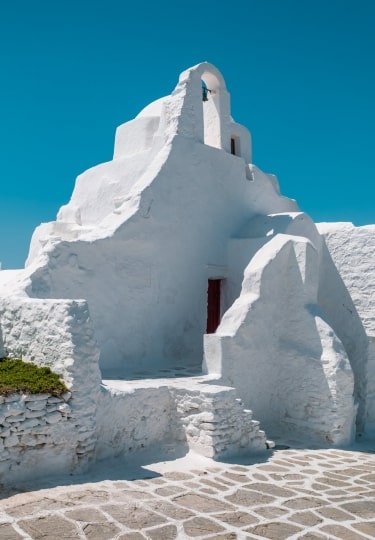The world’s most iconic churches and cathedrals are far more than places of worship. They house priceless works of art, exquisite mosaics, sculptures, and paintings. They’re also symbols of the cities they inhabit, defining the skyline and concealing secrets gathered over centuries.
Churches are rich in history and many of the grand establishments in Europe’s capitals and beyond have withstood wars, revolutions, and fires. In many cases, a city’s cathedral offers the most beautiful vistas over the rooftops, if you’re willing to haul your way up steep, narrow stairs that were intended for medieval workmen rather than 21st-century travelers.
Join us on a journey to twelve of the most beautiful churches in the world, where history, art, faith, and culture come alive.
St. Mark’s Basilica, Venice, Italy
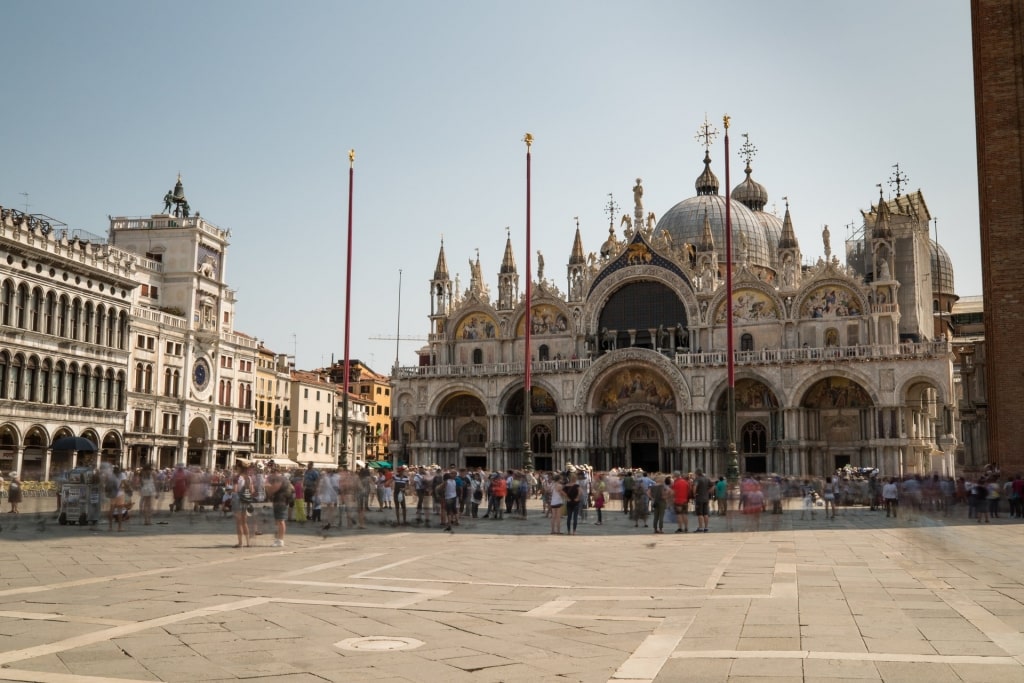
St. Mark’s Basilica in Venice, Italy
The luminously beautiful Basilica di San Marco dominates Venice’s famous square with its gold mosaics that shimmer in the sunlight.
The cathedral was founded in the ninth century to house the body of St. Mark, which had been smuggled by enterprising Venetian merchants out of Egypt in a barrel of pork fat. Look for the statue of the apostle on the gable outside, standing over a gold-winged lion, the symbol of Venice.
Built in pale marble from Syria, Egypt, and Palestine, San Marco is a fine example of Italo-Byzantine architecture with its elaborate domes and cupolas. Inside is just as dazzling as the exterior. You’ll find thousands of ceiling mosaics made from gold leaf fused onto glass to give the light extra quality.
While the altarpiece, the Pala d’Oro, is encrusted with more than 2,000 emeralds, rubies, sapphires, and pearls. It’s little wonder that San Marco has been nicknamed Chiesa d’Oro or the Church of Gold.
Church of the Holy Sepulchre, Jerusalem, Israel
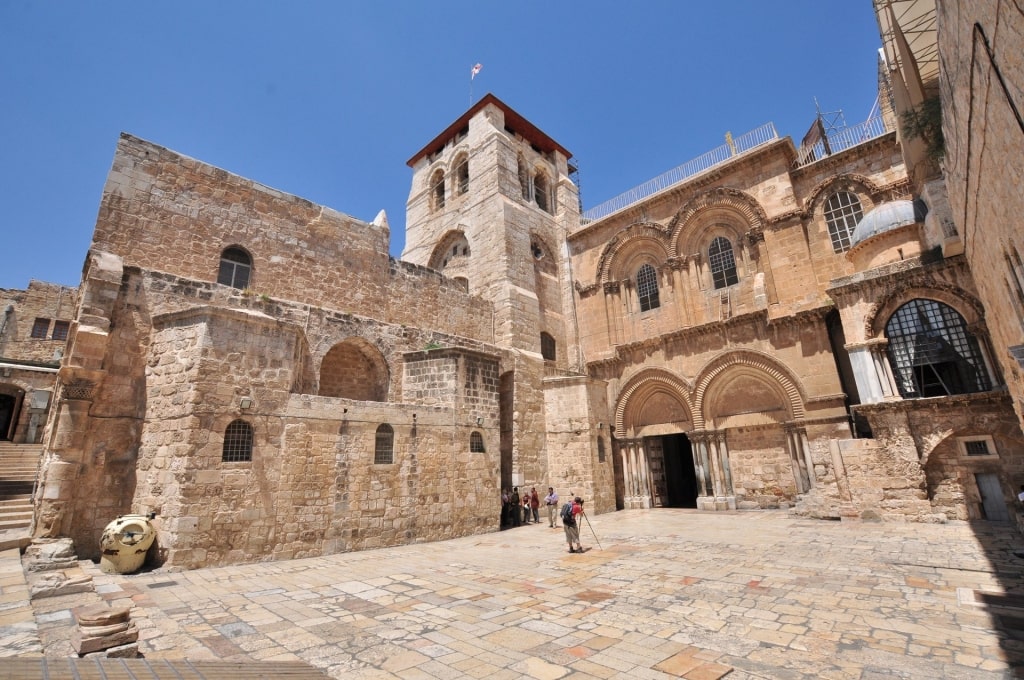
Church of the Holy Sepulchre in Jerusalem, Israel
Whatever your faith, you’ll be profoundly moved by the scenes inside the famous Church of the Holy Sepulchre in Jerusalem, one of the most beautiful churches in the world. Believed to be built over Golgotha, where Jesus was nailed to the cross, pilgrims have flocked to this site for the past 1,600 years.
Most follow the emotional route of the Via Dolorosa, a series of 14 Stations of the Cross tracing Jesus’ final journey and death, with the final five inside the church itself.
Much of the church that stands today dates to the 12th century and the complex comprises five churches, from Armenian to Greek Orthodox and Roman Catholic. The air is always heavy with incense and chanting, as there’s invariably a service taking place, which adds to the atmosphere of deep spirituality.
Read: 10 Unforgettable Things to Do in Jerusalem
Valencia Cathedral, Valencia, Spain
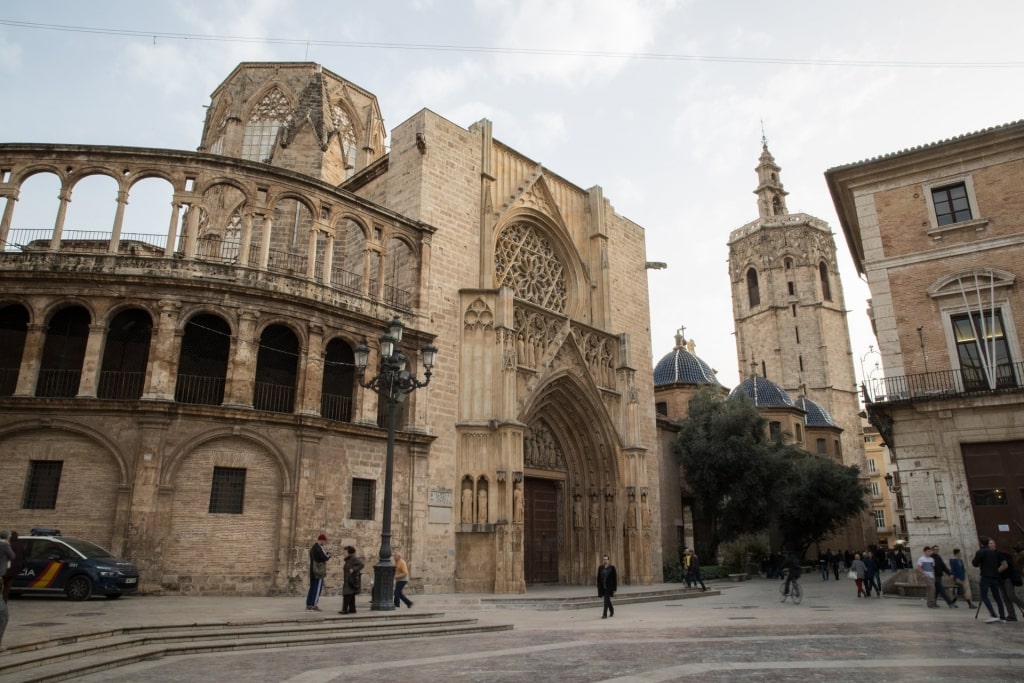
Valencia Cathedral in Valencia, Spain
Built over a mosque after the Moors were driven out of the city in the 13th century, Valencia’s cathedral has a thrilling and dramatic claim to fame. A jewel-encrusted cup of oriental agate stone that is believed to be the Holy Grail is housed in the ornate Capella del Santo Calíz. You can file past the chapel and see the chalice, which draws pilgrims and believers from all over the world.
The cathedral itself is a magnificent confection of Baroque, Gothic, and Romanesque styles, with some priceless artwork on display. Look at the Goya in the Capilla de San Francisco de Borja and when you reach the elaborate, gilded altar, gaze up at the ceiling, where angels look down from a brilliant blue, star-encrusted sky. Climb the bell tower, El Miguelete, to enjoy sweeping views across Valencia.
Read: Best Beaches in Valencia, Spain
La Seu, Palma de Mallorca, Spain
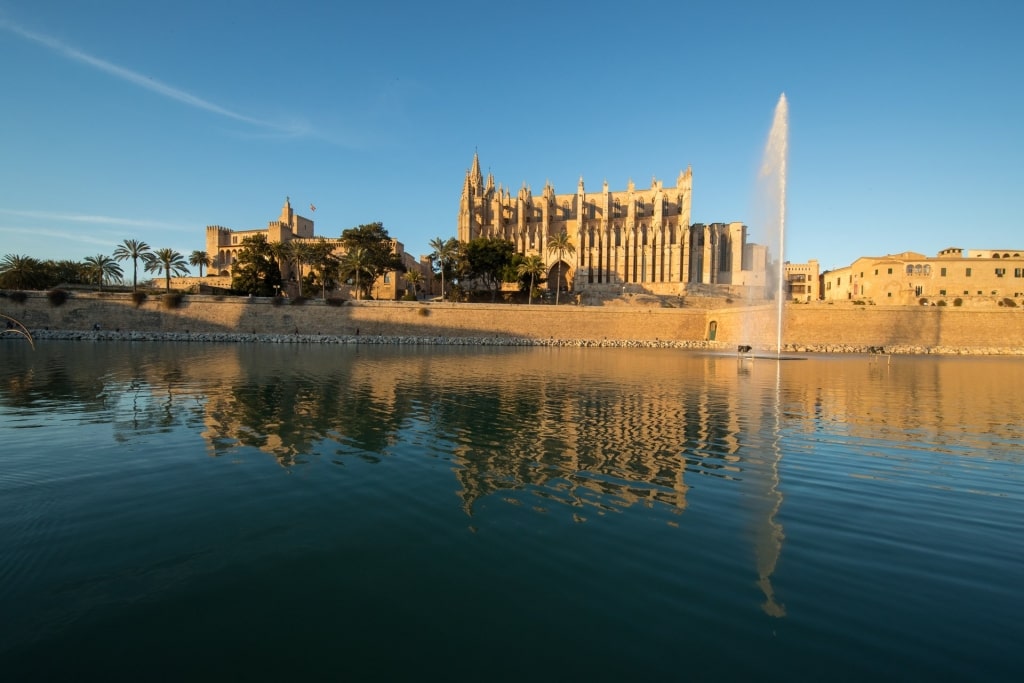
La Seu in Palma de Mallorca, Spain
Palma’s mighty cathedral, La Seu, dominates the eastern end of the wide sweep of Palma Bay, located directly on the waterfront. The cathedral was built in the 14th century and is one of the tallest gothic structures in Europe.
Visit in the morning and you’ll have an incredible sense of the height from inside, as the sun pours through a vast rose window and light filters through stained glass windows that bathe the whole interior in color. La Seu’s slender towers and flying buttresses are also beautifully illuminated at night.
One outstanding feature of this beautiful Spain landmark is the enormous and starkly modern crown of thorns suspended over the altar. While many think this is the work of legendary Barcelona architect Antoni Gaudí, it was in fact completed by one of Gaudí’s students.
After your visit, take time to wander through the tangle of narrow streets that forms the gothic quarter of Palma, peering into grand old mansions with leafy, shaded patios and maybe stopping for some traditional tapas.
Notre-Dame de Paris, Paris, France
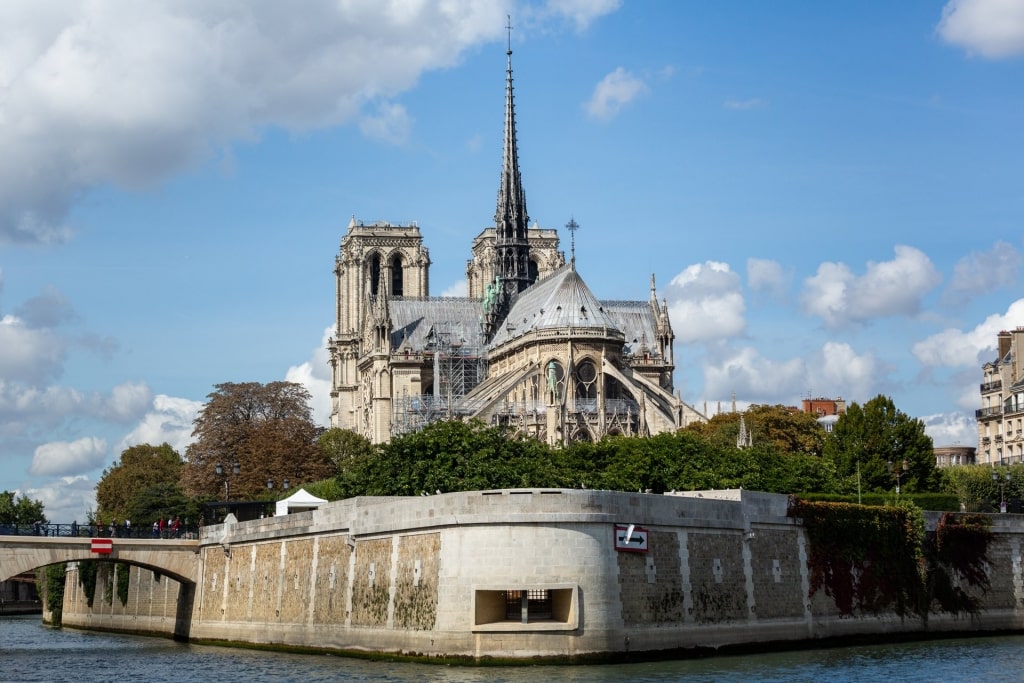
Notre-Dame de Paris in Paris, France
Notre-Dame, one of the most iconic landmarks in Paris, was partially destroyed by a fire in April 2019, as the world looked on in shock. Now, the restoration project of one of the most beautiful churches in the world is well underway as the roof and spire are currently rebuilt.
Thankfully, the dramatic façade of this French Gothic masterpiece is intact and still dominates the bank of the Seine on the Ile de la Cité, its square towers and ribbed flying buttresses as distinctive as ever.
Once you’ve admired one of Europe’s most famous landmarks from the outside, head across the Pont au Double to the Left Bank and check out the magical Shakespeare & Company store, the city’s famous bohemian English language bookshop. You’ll find new and rare books, readings, aspiring authors, book signings, and a cozy café with views back across the river to Notre Dame.
Read: One Day in Paris: The Ultimate Itinerary
Duomo Santa Maria del Fiore, Florence, Italy
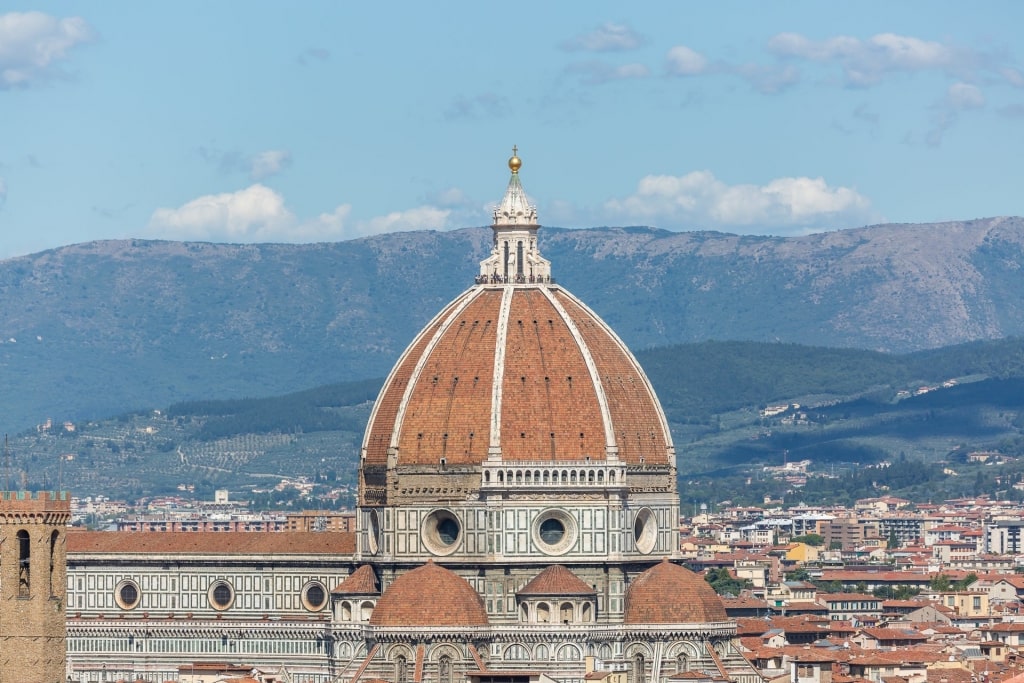
Duomo Santa Maria del Fiore in Florence, Italy
Dominating the skyline of Florence is the Duomo Santa Maria del Fiore. With its distinctive red-roofed Renaissance cupola, designed in the 15th century by Filippo Brunelleschi, the Duomo is an elaborate jigsaw of pink, white, and green marble.
Inside, the cathedral is relatively simple but take a few moments to appreciate the beautiful mosaic floors, best viewed from above. Check out the clock above the entrance, too; designed in 1443, it’s still working.
One part of the Duomo’s interior that’s far from plain is Vasari’s dazzling fresco of the Last Judgement—one of the best art pieces to see in Florence—which dominates the inside of the cupola. The perspective is genius, as is the work’s flamboyant style.
You can best appreciate the fresco by climbing 463 steep, narrow stone steps to the inside of the cupola and walk the balustrade around its inner curve. Outside at the top, you’ll have breathtaking views across the medieval city.
Read: Two Days in Florence
La Sagrada Familia, Barcelona, Spain
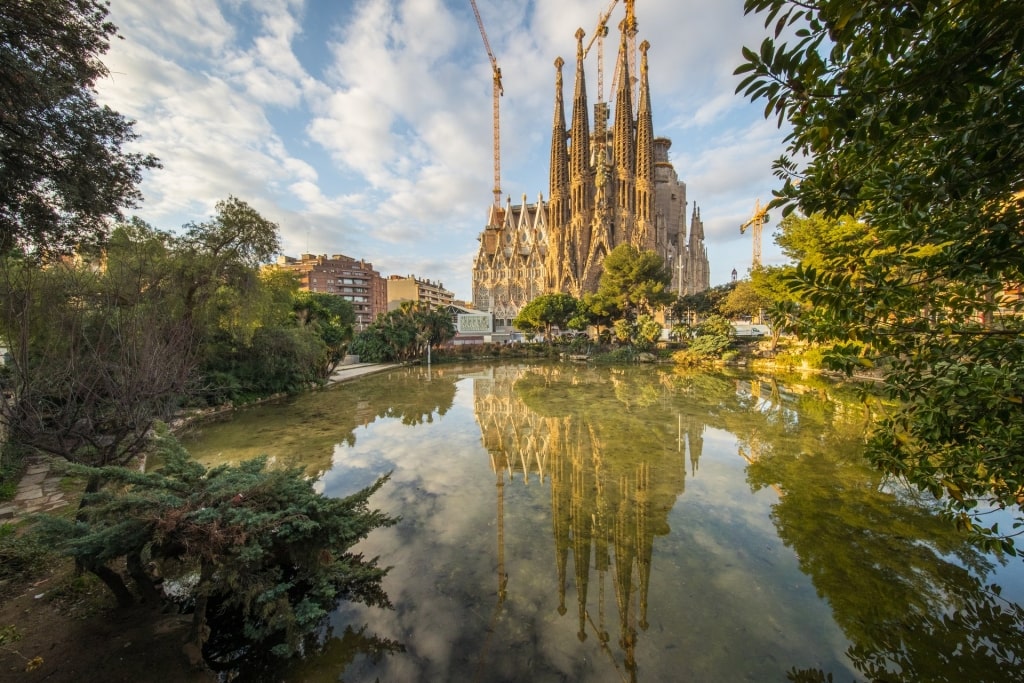
La Sagrada Familia in Barcelona, Spain
Antoni Gaudí’s great unfinished masterpiece is Spain’s most visited attraction and with good reason. Towering above the elegant Eixample district in Barcelona, the Sagrada Familia is a work of dazzling genius.
The architect started work on this modernist temple some 138 years ago and construction continues today. Based on the wavy forms of nature, the slender towers and ornate facades are modeled on the rock formations of the holy mountain of Montserrat, located outside the city, with organic shapes and colors.
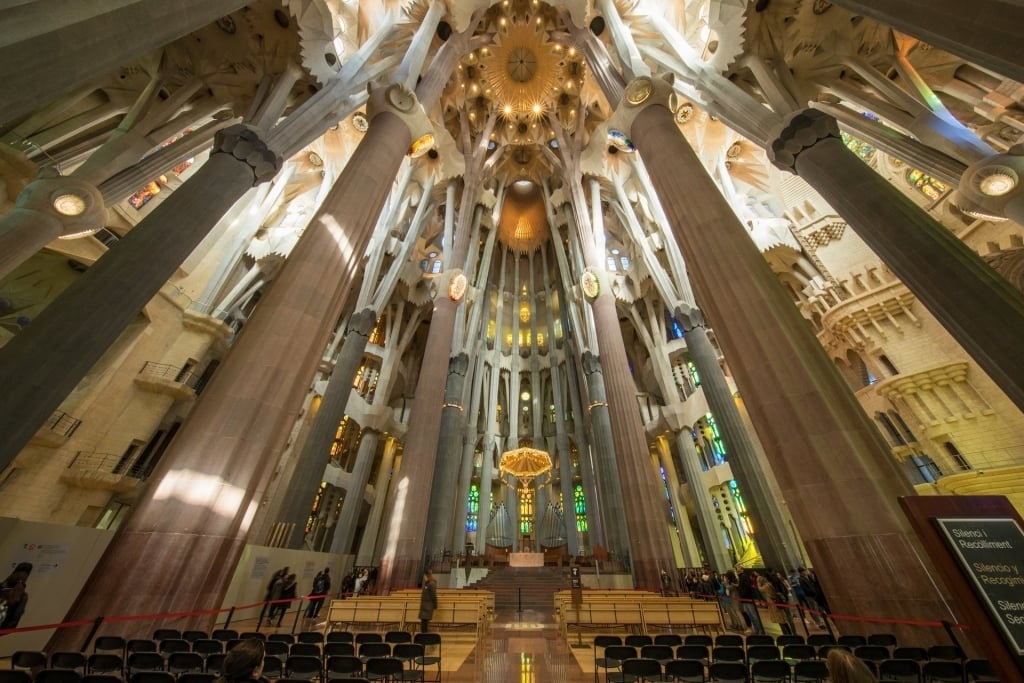
La Sagrada Familia in Barcelona, Spain
Inside the beautiful Spanish church, the soaring ceilings resemble a forest canopy and are supported by impossibly slender columns that look like trees. Sunlight filtering through the stained glass windows gives the illusion of being in a kind of technicolor fairytale forest.
If you visit one place in Spain, make it this one. And if you can brave heights, book a ticket to ascend one of the towers by elevator. The views over the city are second to none.
Read: Most Beautiful Places in Spain
St. Peter’s Basilica, Vatican City, Italy
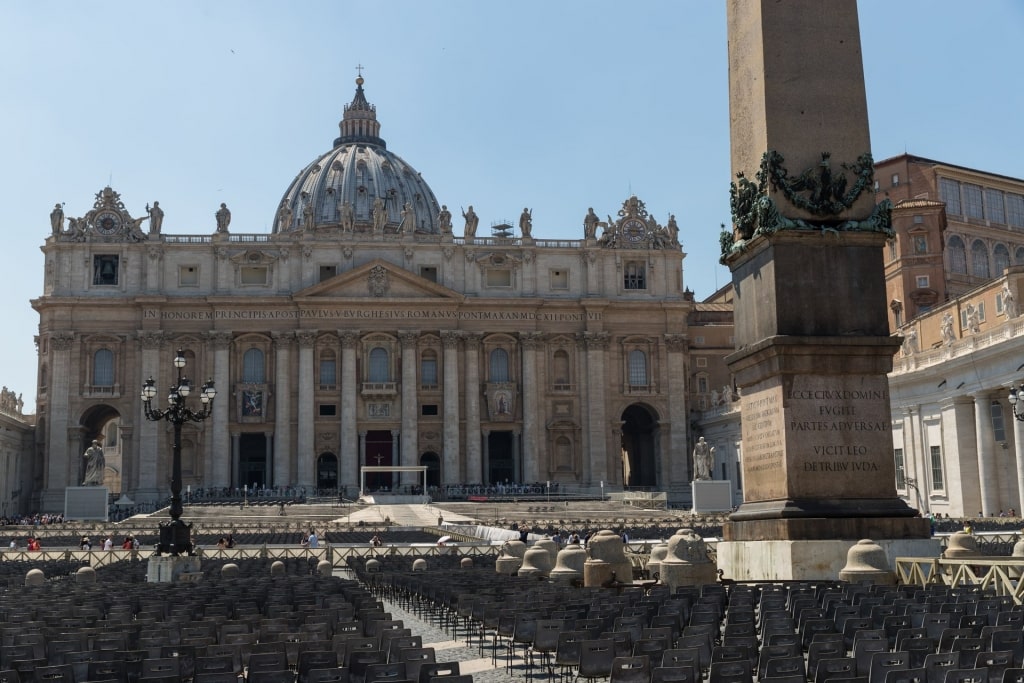
St. Peter’s Basilica in Vatican City, Italy
The sheer height of the dazzling St. Peter’s Basilica in Rome—the largest and one of the most beautiful churches in the world—is what grabs your attention first, as the dome, designed by Michelangelo, soars to an incredible 447 feet. (If the outline of the cupola looks familiar, it’s because the Capitol Building in Washington, D.C. was modeled after this extraordinary construction.)
This Roman church is breathtaking in its detail and beauty, with priceless relics throughout. Michelangelo’s Pietà, a heartbreakingly beautiful statue of Mary cradling the dead body of Christ, is a highlight and it’s the only work the artist ever signed. Bernini’s baldachin, an elaborate bronze canopy, stands over the altar, under which St. Peter is buried.
If you’re not afraid of heights or confined spaces, climb up the 320 stairs to the top of the dome and enjoy dazzling views over the city as your reward.
Read: How to Spend 3 Unforgettable Days in Rome
St. Paul’s Cathedral, London, England
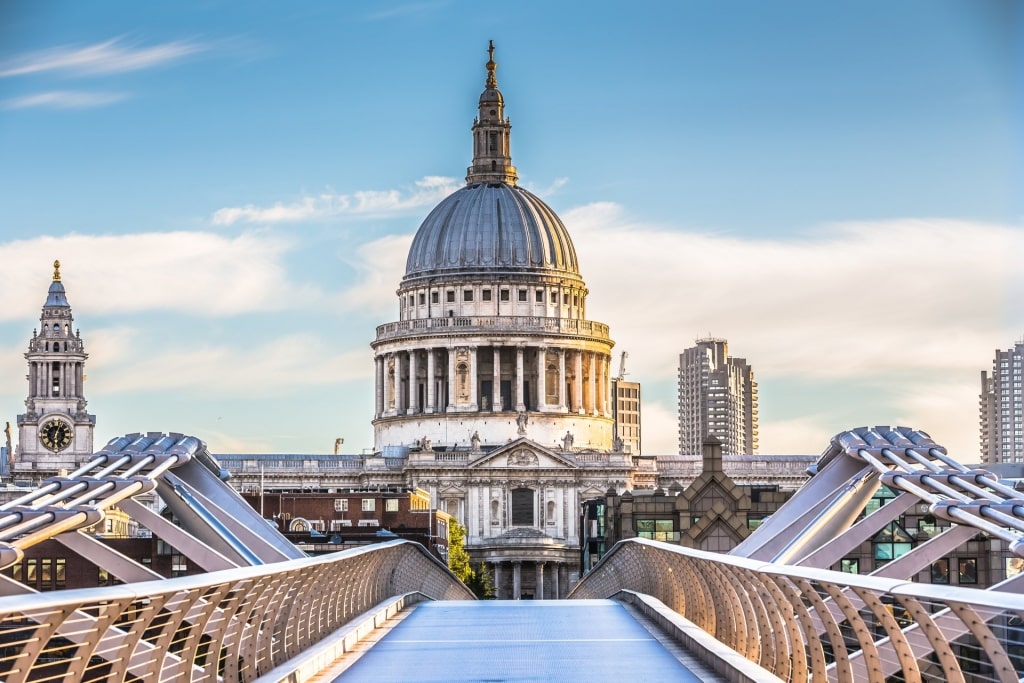
St. Paul’s Cathedral in London, England
The crypt of St. Paul’s Cathedral, London’s biggest and arguably most beautiful church, is like a who’s who of the great and the good. Lord Horatio Nelson is buried here, as well as the Duke of Wellington, the sculptor Henry Moore, the scientist Alexander Fleming, and Sir Christopher Wren, architect of the church, which was built between 1675 and 1710.
Wren’s design was at least the fourth incarnation of a church on this site that dates back over 1,400 years. Its immediate predecessor was destroyed in the Great Fire of London in 1666. Astonishingly, the mighty dome, which was inspired by St.Peter’s Basilica in Rome, survived the bombing of London in the Blitz by the Luftwaffe and to this day the church is a symbol to Londoners of resilience.
Inside, it’s as much about the historical events that have taken place in St. Paul’s as the gilded beauty and soaring ceiling. Martin Luther King preached here in 1964, while Sir Winston Churchill’s funeral took place in 1965, as did Baroness Margaret Thatcher’s in 2013.
St. John’s Co-Cathedral, Valletta, Malta
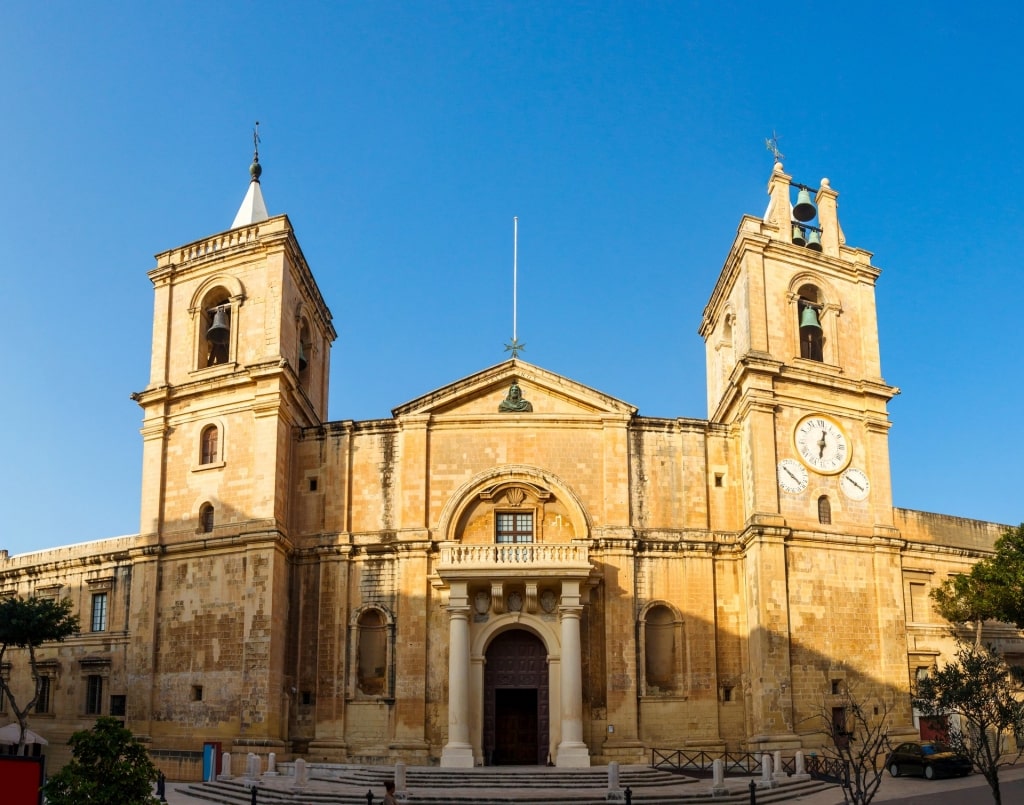
St. John’s Co-Cathedral in Valletta, Malta
Don’t be discouraged by the austere exterior of St. John’s Co-Cathedral in the heart of Valleta. Inside is a staggeringly opulent tribute to high baroque, with gold festooning every surface and the floor a carpet of exquisitely decorated marble tombs.
The cathedral was built in the 16th century by the Knights of Malta and further treasures have been added over the centuries as gifts from various Grand Masters and Knights of the Order of St. John.
Italian artist Mattia Preti, himself a member of the Order of St. John, is responsible for the lavish interiors, which depict scenes from the life of St. John. The star attraction, though, is Caravaggio’s gruesome masterpiece, The Beheading of St. John the Baptist, almost photographic in its quality and luminosity, which is housed in the Oratory. The painting is regarded as one of the most important works in the history of Western art.
Panagia Paraportiani, Mykonos, Greece
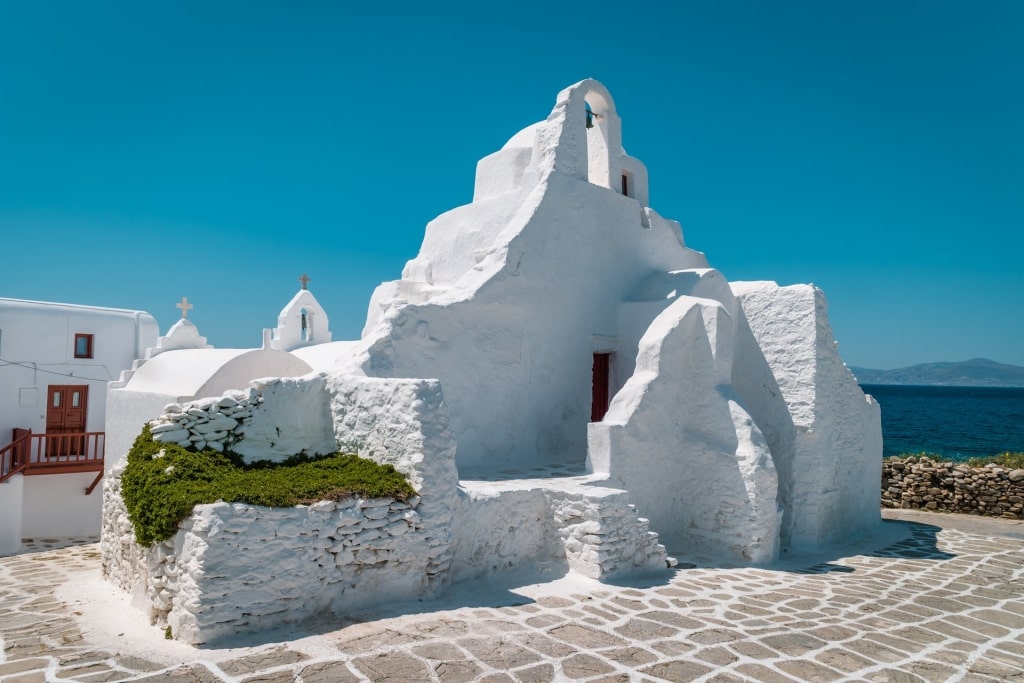
Panagia Paraportiani in Mykonos, Greece
This tiny, stark cluster of five white chapels sits at the entrance to Mykonos town in the Kastro neighborhood. Its name means “our lady of the side gate,” as its entrance was in the side gate of the castle back in the 16th century when construction began. While the church is usually closed to the public, it’s the immaculate, snow-white Cycladean architecture that draws the eye, especially when viewed against a backdrop of sapphire seawater and deep blue skies.
After your visit, explore some of the best things to do in Mykonos, such as wandering around the narrow streets of the town and stopping at colorful Little Venice for drinks right on the waterfront.
Read: Famous Landmarks in Greece
Metropolitan Cathedral, Rio de Janeiro, Brazil
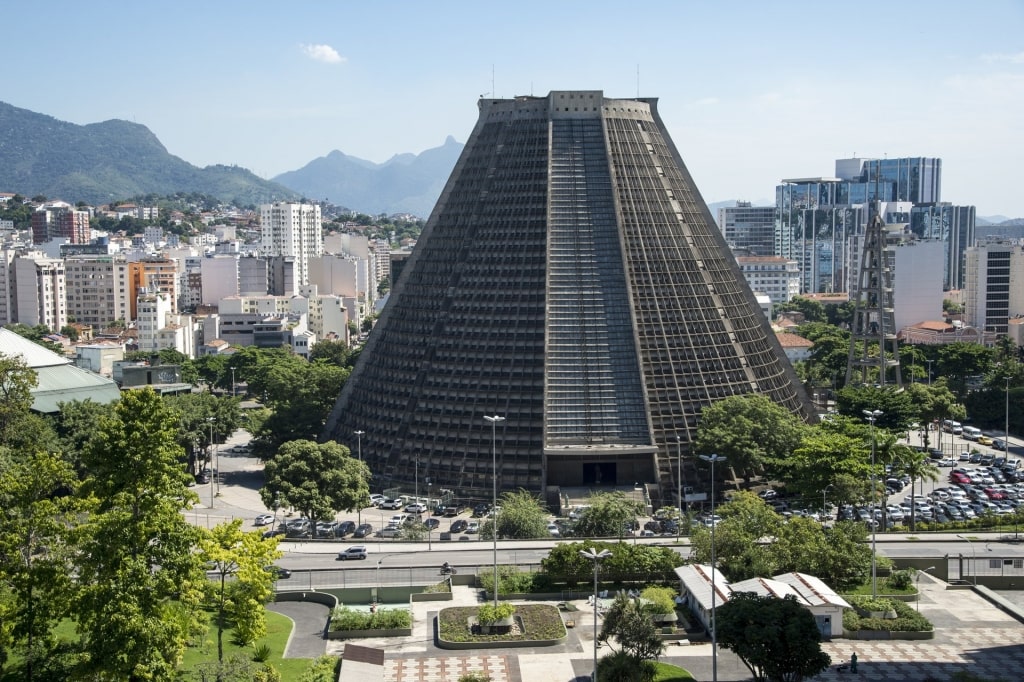
Metropolitan Cathedral in Rio de Janeiro, Brazil
Resembling a chunk of a space rocket from a distance, this startling, cone-shaped structure was completed in 1976 and is one of the most famous landmarks in Brazil. On closer inspection, you’ll notice that architect Edgar de Oliveira da Fonseca modeled his design on Mayan pyramids and he’s certainly achieved something dramatic.
Around 246 feet high, the Metropolitan Cathedral, which is dedicated to St. Sebastian, the patron saint of Rio de Janeiro, accommodates a congregation of 20,000. Its four stained glass windows soar 210 feet above, casting light in vivid colors on the congregation below.
While there’s no cross or spire on top of the cathedral, when you enter, you’ll see an enormous cross made of transparent material set in the roof that was designed to filter in sunlight to a dazzling effect.
Read: Famous Landmarks in South America
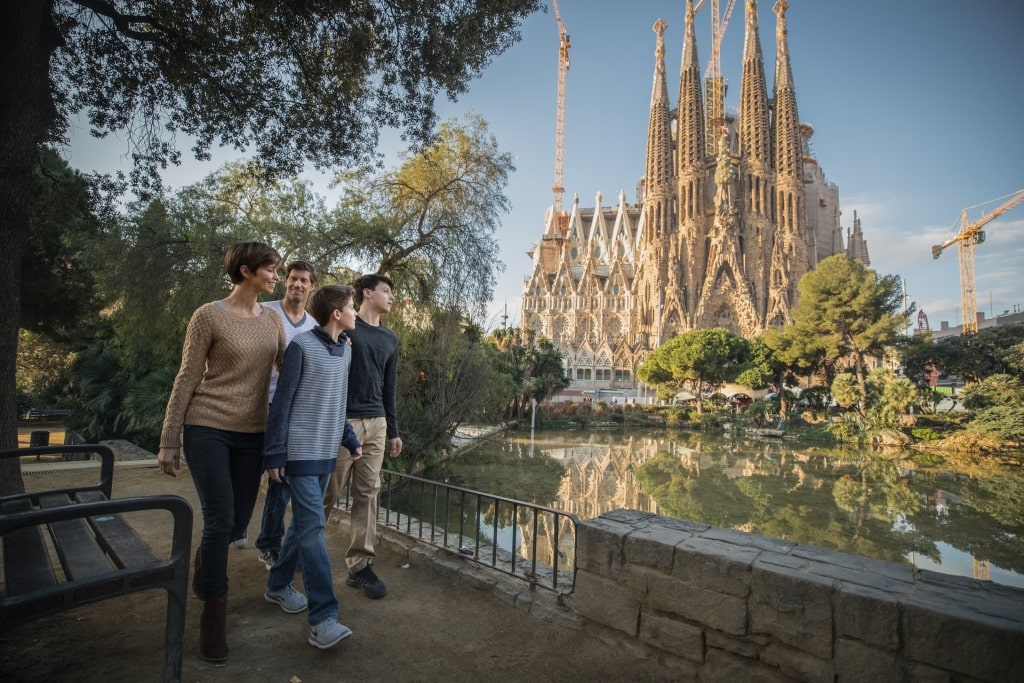
La Sagrada Familia in Barcelona, Spain
You’ll be able to visit all of these exquisite churches and more on one of our cruises. Browse Celebrity Cruises’ selection of worldwide itineraries on our website and set sail on a thrilling cultural adventure.
